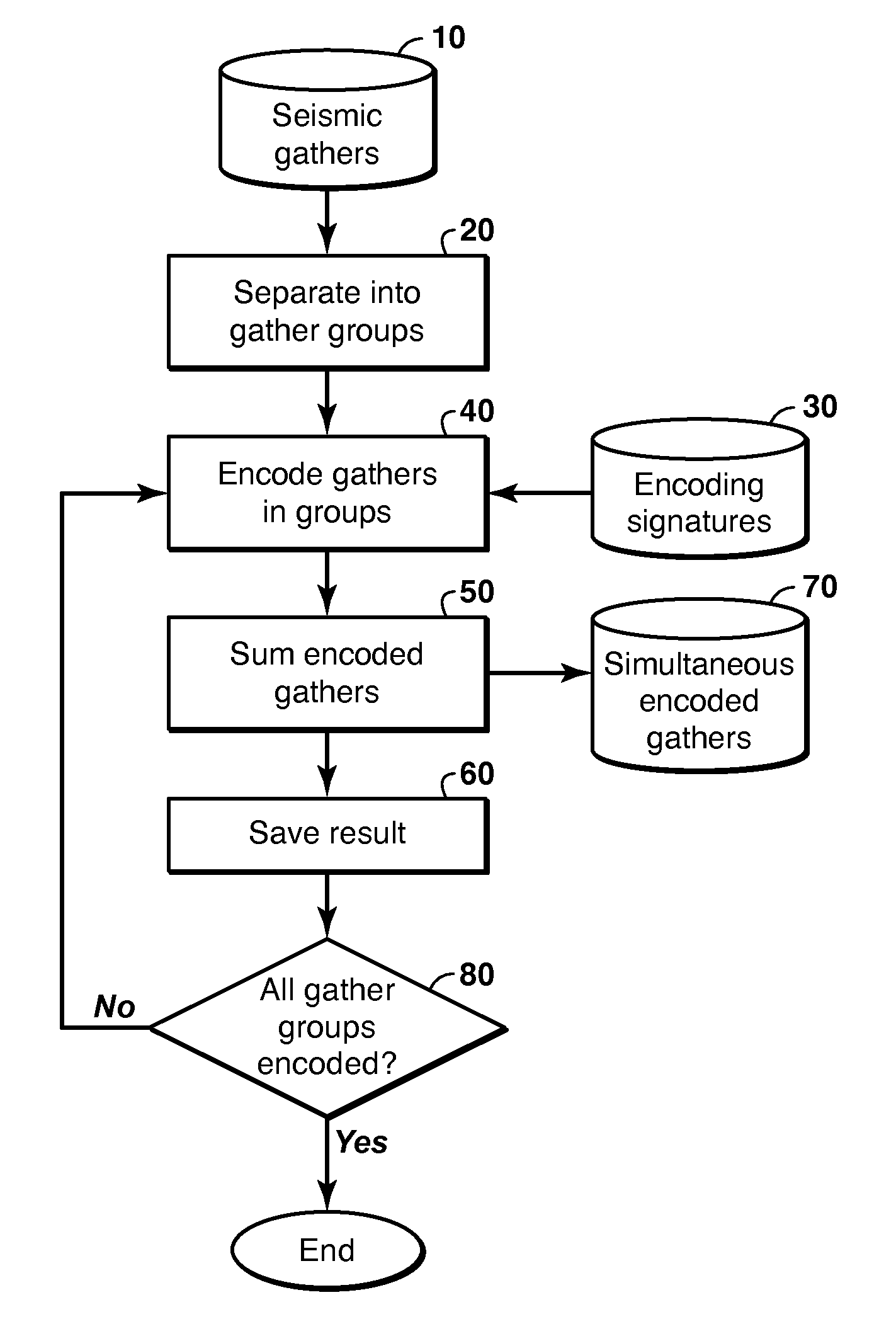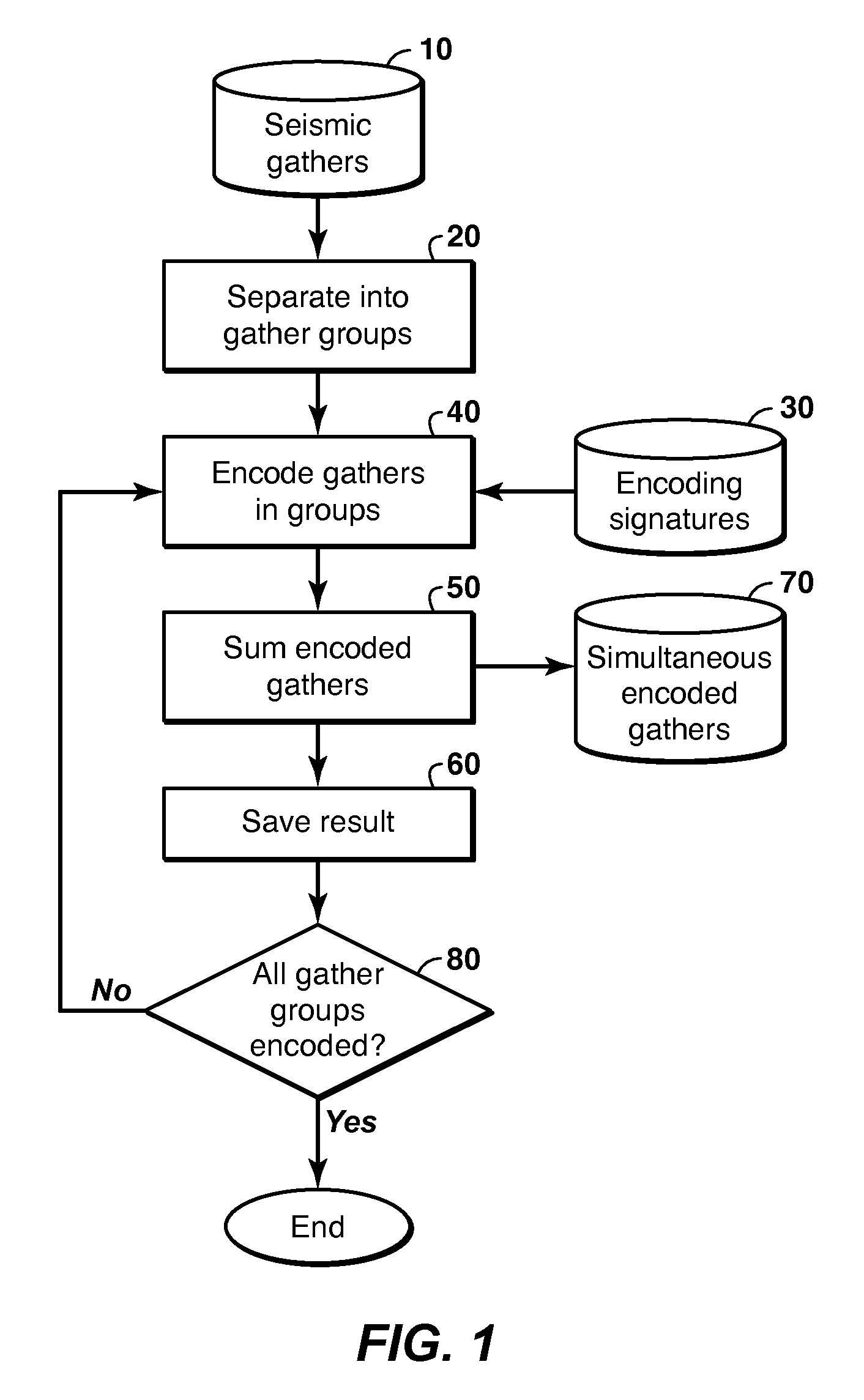Iterative inversion of data from simultaneous geophysical sources
a geophysical source and simultaneous data technology, applied in the field of geophysical prospecting, can solve the problems of inability to apply it to many problems of interest, high computational cost, and inability to compute iteratively
- Summary
- Abstract
- Description
- Claims
- Application Information
AI Technical Summary
Benefits of technology
Problems solved by technology
Method used
Image
Examples
examples
[0139]FIGS. 3-8 represent a synthetic example of computing the cost function using the present invention and comparison with the conventional sequential source method. The geophysical properties model in this simple example is just a model of the acoustic wave velocity. FIG. 3 is the base velocity model (the model that will be inverted for) for this example. The shading indicates the velocity at each depth. The background of this model is a linear gradient starting at 1500 m / s at the top of the model and having a gradient of 0.5 sec−1. Thirty-two 64 m thick horizontal layers (210) having a plus or minus 100 m / s velocity are added to the background gradient. The darker horizontal bands in FIG. 3 represent layers where 100 m / s is added to the linear gradient background, and the alternating lighter horizontal bands represent layers where 100 m / s is subtracted from the linear gradient background. Finally a rectangular anomaly (220) that is 256 m tall and 256 m wide and having a velocity...
PUM
 Login to View More
Login to View More Abstract
Description
Claims
Application Information
 Login to View More
Login to View More - R&D
- Intellectual Property
- Life Sciences
- Materials
- Tech Scout
- Unparalleled Data Quality
- Higher Quality Content
- 60% Fewer Hallucinations
Browse by: Latest US Patents, China's latest patents, Technical Efficacy Thesaurus, Application Domain, Technology Topic, Popular Technical Reports.
© 2025 PatSnap. All rights reserved.Legal|Privacy policy|Modern Slavery Act Transparency Statement|Sitemap|About US| Contact US: help@patsnap.com



